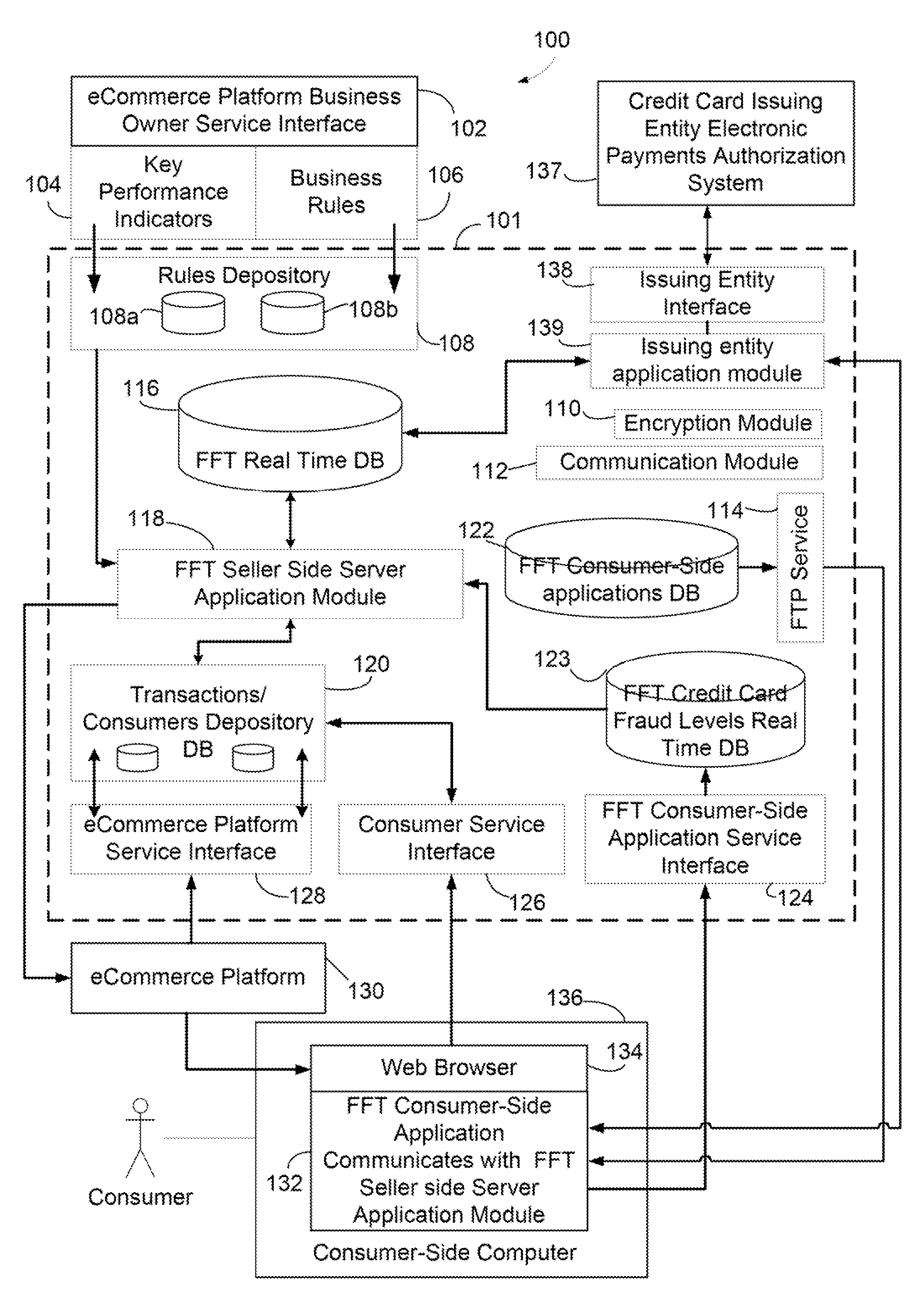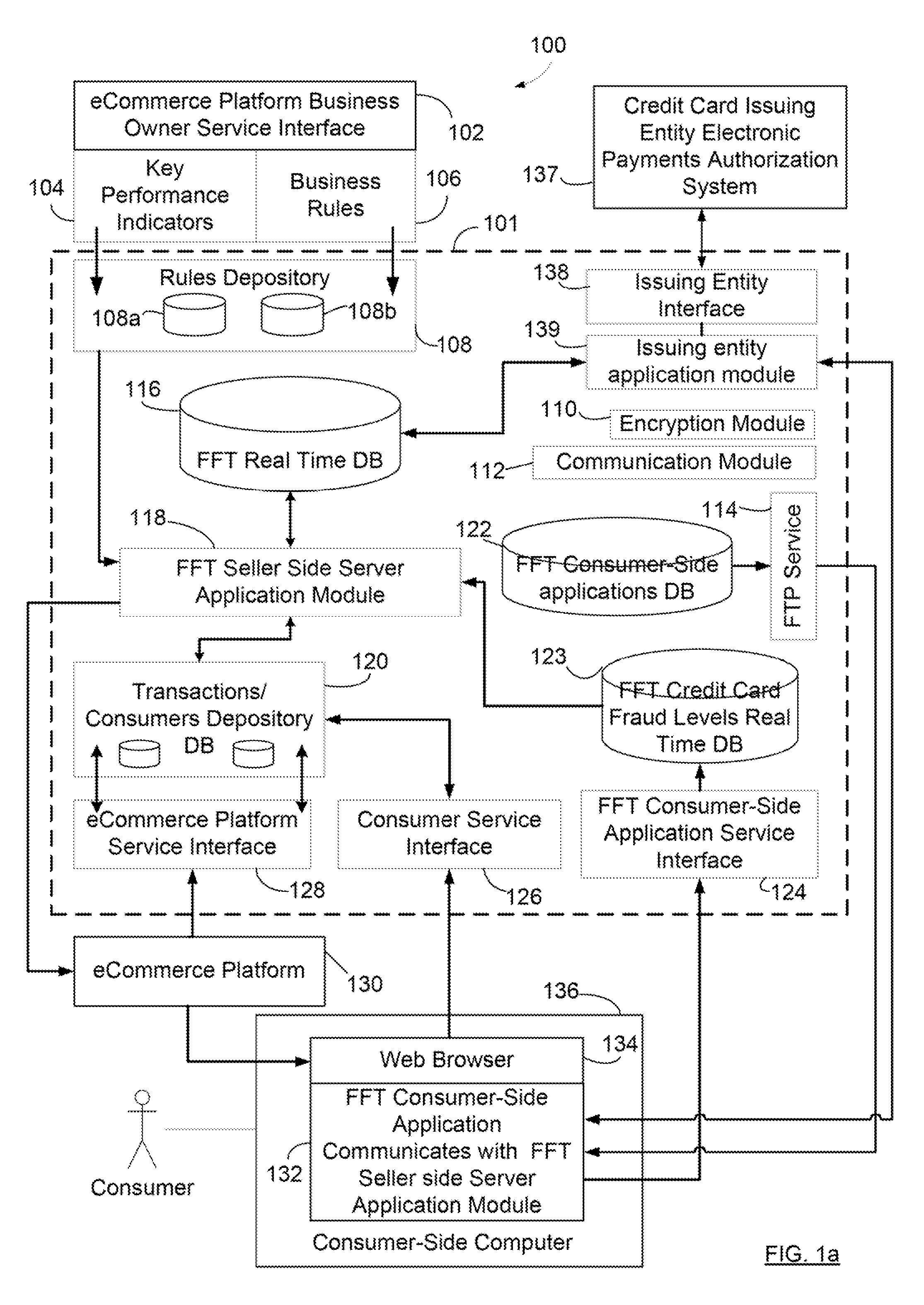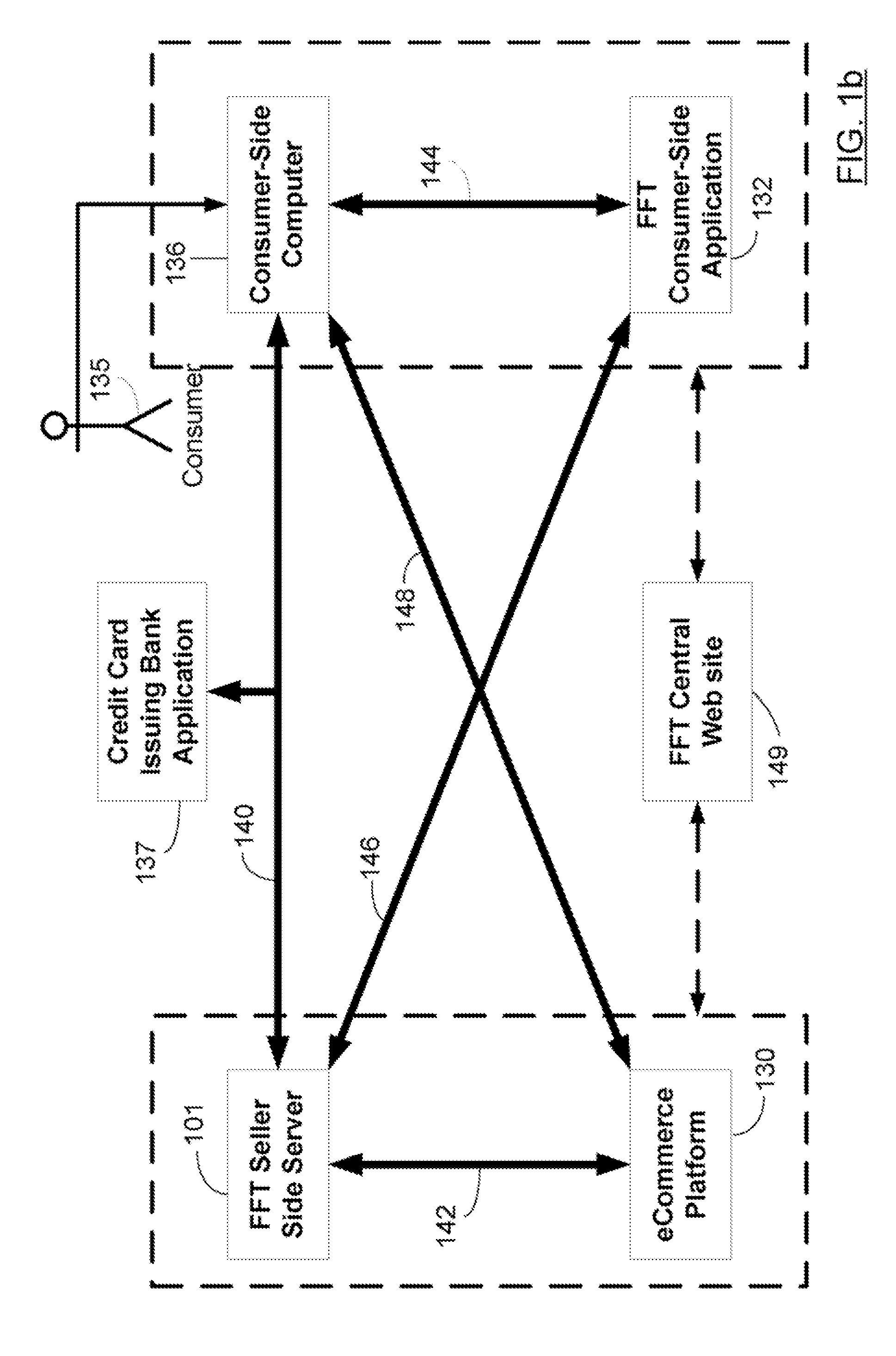Systems and Methods for Automatic and Transparent Client Authentication and Online Transaction Verification
a client authentication and transparent technology, applied in the field of automatic and transparent client authentication and online transaction verification, can solve the problems of monetary and product loss, the identity of the parties executing the e-commerce e-transaction cannot be easily verified for either the seller or the consumer, and the loss of products
- Summary
- Abstract
- Description
- Claims
- Application Information
AI Technical Summary
Benefits of technology
Problems solved by technology
Method used
Image
Examples
second embodiment
[0112]the method is shown in FIG. 8A which is especially well suited for use by merchants without the participation of credit card associations or card issuers. The first step is again to validate a client's identity and associate this identity with a credit card 720 using one of the methods that has been described. The eFFT server wilt store the card number and e-identity association in its database to be used for subsequent approval of transactions 722. When an online transaction occurs and a user selects an e-identity verification option, then the merchant sends an approval request to an e-FFT service 724. The e-FFT service then contacts the e-identity associated with the card 726 in order to obtain a client input response of ‘accept’ or ‘reject’728. In step 728, the e-identity sends the client a request for either approval or rejection of the transaction. In this example, this occurs using an e-identity which is MSNmessenger™ which sends instructions 729A to the MSNmessenger™ mo...
example a
[0121]In example a, the identity of the client is known to the merchant, while in b It is not, yet using example c, the client may be identified to the merchant only through the eFFT identification number. Since the eFFT service can also be used to authorize a credit card payment for a particular user, the merchant may accept a credit card payment without knowing the identity of the user, and further, the eFFT service may debit the credit card, or client's bank account, and then send payment to the merchant with a temporary credit card number or by other means, without the merchant gaining access to the client's identity or payment information. In all cases, rather than the client having to provide an e-mail contact, merchant-to-client communication may be mediated using the eFFT unique identification number so that the merchant may not then send communications such as ‘promotional offers’ to the client without the client's permission.
[0122]Sample Screens used for E-Identity Linking...
PUM
 Login to View More
Login to View More Abstract
Description
Claims
Application Information
 Login to View More
Login to View More - R&D
- Intellectual Property
- Life Sciences
- Materials
- Tech Scout
- Unparalleled Data Quality
- Higher Quality Content
- 60% Fewer Hallucinations
Browse by: Latest US Patents, China's latest patents, Technical Efficacy Thesaurus, Application Domain, Technology Topic, Popular Technical Reports.
© 2025 PatSnap. All rights reserved.Legal|Privacy policy|Modern Slavery Act Transparency Statement|Sitemap|About US| Contact US: help@patsnap.com



